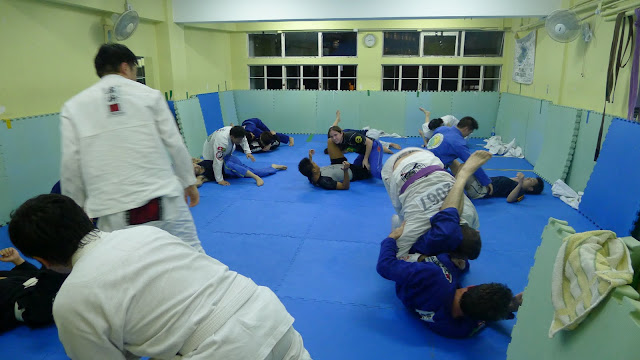Below is the fulltext provide by Chelsea Bainbridge-Donner
Brazilian Jiu-Jitsu: A Great Way for Kids Learn Self-Defense and Have Fun
As an English teacher, I see firsthand the effects of spending too much time studying and not enough time playing. Kids that do not do enough physical activity are very easy to spot in class: they are lethargic, unhappy, and often uncooperative. Doing Jiu-jitsu gives kids an outlet: a place to play with other kids of all different ages and backgrounds, a place to play and test their strength. Physical activity and stimulation is as important for young children as mental stimulation. Without physical activity, children’s mental abilities tend to stagnate.
Jiu-jitsu, wrestling, and grappling each offer kids something that other martial arts do not: a realistic way to gauge their self-defense abilities. Jiu-jitsu teaches kids how to stop a fight via non-violent methods like chokes and joint manipulation. Perhaps more importantly, it teaches them that there are limits to every technique. Other martial arts tend to give kids an inflated sense of their abilities, because there is no live sparring. In Jiu-jitsu, on the other hand, safe, controlled, live sparring is integral to training.
When people find out that I do Brazilian Jiu-jitsu, they are often genuinely baffled. They expect, upon hearing that I do “martial arts,” to hear me say that I do kickboxing once a week, not that I grapple or wrestle. They are often even more shocked when I tell them I am going on eleven years in the sport. Without fail, they will ask me how I started.
I was always an active child, but painfully shy. I was intimidated by adults, and my parents put me into karate in the hopes that I would gain some self-confidence. One day, a man came to the dojo to show us some grappling. From that day on, I was hooked. My family moved across the country not too long after that class, and I decided to try Jiu-jitsu.
I can only imagine how my teacher felt when I walked in the door: a twelve-year-old girl, accompanied by her father, asking to join the class. To his credit, he was very welcoming. There were no kid’s classes to join at that time, so I started my training with the adults. Doing Jiu-jitsu gave me confidence in myself that I had never had before. Bullying, when it happened, stopped bothering me: I knew my abilities and limits better than most of my peers, and it gave me confidence I had never had before.
The children’s classes take place on Saturday afternoons, and they are open to kids of all ages. The class is taught in English, and many of the kids that practice Jiu-jitsu have better English at a younger age than my language students. Safety is the number one priority of the children’s classes, and to ensure that the kids are safe, there are always a number of instructors on hand.
The kids begin with basic movements; all the movements have animal names so that the children can remember them more easily. The most basic movement is called “shrimping,” which helps the kids learn to move their hips while lying on their backs. As the children become good at the movements, they are given more difficult ones to perfect.
After their warm-up, the kids do a short work-out that helps them strengthen their muscles. It’s usually a combination of cardio and body-weight strength training exercises, like jumping jacks and pushups. The class then moves on to stand-up techniques. Learning how to leverage a standing opponent’s weight is easier for the younger children to learn, and this part of class is always fun and exciting for everyone.
After doing stand-up, the class moves to the ground. The youngest kids cannot attempt submissions on their opponent, but instead just try to sit on each other’s chests. The older kids can do submissions on other older, more responsible children. The purpose of groundwork is to control the opponent without striking him, and this type of non-violent control is the cornerstone of what we try to teach the kids.
Today, my mother tells me that letting me do Brazilian Jiu-jitsu was one of the hardest things she ever did. She worried constantly for my safety, but she let me continue because I loved it and she could see the change it made in my character. For parents, it can be difficult to let your kids try something that looks so rough, particularly if your child is smaller or weaker than his or her peers. However, doing Brazilian Jiu-jitsu will give your child the skills needed to protect him- or herself against people bigger and stronger. Letting kids test their skill and their strength in a safe environment teaches them the importance of personal integrity and sportsmanship.




























